Or go to our Shopify Theme Detector directly
On-page Optimization for Shopify Stores
Last modified: June 12, 2024

This post will guide you through effective on-page optimization techniques tailored specifically for Shopify stores.
| # | Name | Image | |
|---|---|---|---|
| 1 |
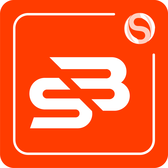
|
SEO Booster ‑ SEO Marketing
|
|
| 2 |

|
Plug In SEO
|
|
| 3 |

|
SEO Manager
|
|
| 4 |
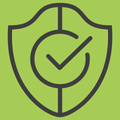
|
Benchmark Hero
|
|
| 5 |

|
SEO Doctor
|
|
| 6 |

|
Ultra SEO
|
|
| 7 |
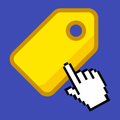
|
SEO Products Optimizer
|
|
| 8 |

|
Smart SEO
|
|
| 9 |

|
SEO Image Optimizer
|
|
| 10 |

|
JSON-LD for SEO
|
|
| 11 |

|
SEO Expert Pro
|
|
| 12 |

|
SEO Images All-In-One SEO
|
|
| 13 |
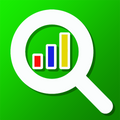
|
SEO Ranger
|
|
| 14 |
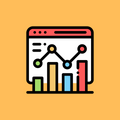
|
All In One SEO Optimizer
|
|
| 15 |

|
ReloadSEO
|
|
| 16 |

|
SEO Assistant by Buymaxx
|
|
| 17 |

|
SEOMetriks Marketing Tools
|
|
| 18 |

|
Shopify SEO Suite by AVADA
|
|
|
Show More
|
|||
Understanding On-page Optimization
On-page optimization involves tweaking elements on your website to improve its search engine rankings and user experience, ultimately enhancing the search engine listing for a webpage. This includes optimizing content, meta tags, images, URLs, and internal linking. Effective on-page optimization helps search engines understand your site better and makes it more appealing to visitors.
Optimizing Page Titles and Meta Descriptions
Page Titles
Your page titles are crucial for SEO because they tell search engines and users what your page is about. Make sure each page title is unique, descriptive, and includes relevant keywords. Keep it under 60 characters to ensure it displays correctly in search results. If you need to hide a page from search engines, you can use the “noindex” meta tag or password-protect the page to prevent it from being indexed.
Meta Descriptions
Meta descriptions provide a brief summary of your page content. Although they don’t directly impact store rankings, well-written meta descriptions can improve click-through rates. Aim for 150–160 characters and include a call to action along with your main keywords.
Creating High-Quality Content
Relevant and Engaging
Your content should be relevant to your audience and provide value. Focus on creating informative, engaging, and original content that answers your customers’ questions and meets their needs. Use a conversational tone to connect with your readers. In addition, remember to renew old content by updating it with fresh information and insights to maintain its relevance and SEO value over time.
Keyword Optimization
Incorporate relevant keywords naturally throughout your content. Avoid keyword stuffing, as it can harm your SEO and make your content difficult to read. Use tools like Google Keyword Planner to find the best keywords for your niche. Also, ensure you target the right keywords that align with your content and audience to improve your search engine rankings.
Optimizing Images
File Names and Alt Text
Before uploading images, name your files with descriptive, keyword-rich titles. Use hyphens to separate words. Add alt text to each image, describing what the image is about and including relevant keywords. This helps search engines understand the content of your images and improves accessibility. Similarly, for video and text content, ensure that filenames are descriptive and include relevant keywords. Use alt text for videos and transcripts for text content to improve accessibility and SEO.
Image Size and Format
Large images can slow down your site, negatively impacting user experience and SEO. Compress images to reduce file size without compromising quality. Use modern formats like WebP for better performance to further optimize images for SEO.
Improving URL Structure
Descriptive URLs
Use clean, descriptive URLs that include your target keywords. Avoid using long strings of numbers or irrelevant characters. A good URL structure is easy to read and gives users and search engines a clear idea of what the page is about. Including ‘robot.txt’ in your URLs can be helpful if you want to indicate to search engine crawlers specific instructions for how to crawl and index your site.
URL Hierarchy
Organize your URLs in a logical hierarchy that reflects your site’s structure. This makes it easier for search engines to crawl and index your pages. For example, use /category/product-name instead of /product-name.
Enhancing Internal Linking
Internal links help search engines understand the relationship between your pages and distribute link equity throughout your site. They also improve navigation for users. Link to relevant pages within your content, using descriptive anchor text that includes keywords. Additionally, building inbound links from other reputable websites and following proper linking practices can further enhance your site’s SEO and visibility.
Mobile Optimization
With more people shopping on mobile devices, ensuring your Shopify store is mobile-friendly is crucial. Use a responsive design that adjusts to different screen sizes. Optimize your site’s loading speed by minimizing code, leveraging browser caching, and compressing images. Google’s Mobile-Friendly Test tool can help you identify and fix mobile usability issues. Also, make sure your sitemap is correctly set up and submitted to search engines to aid them in efficiently crawling and indexing your mobile-friendly content.
Monitoring and Analyzing Performance
Use tools like Google Analytics, Google Search Console, and Google Ads to monitor your site’s performance. Track key metrics such as organic traffic, bounce rate, and conversion rates. Regularly analyze this data to identify areas for improvement and adjust your on-page optimization strategies accordingly.
Conclusion: On-page Optimization for Shopify Stores
By focusing on key elements like page titles, meta descriptions, content quality, image optimization, URL structure, internal linking, and mobile optimization, you can improve your store’s visibility and user experience.
-
What is the impact of product descriptions on on-page optimization for Shopify stores?
Detailed, keyword-rich product descriptions help search engines understand the content of your product pages and can improve your search rankings, while also providing valuable information to customers.
-
Can I use Shopify apps to help with on-page optimization?
Yes, there are many Shopify apps available that can assist with various aspects of on-page optimization, including SEO, image optimization, and performance tracking.
-
What is the impact of bounce rate on on-page optimization for Shopify stores?
A high bounce rate can signal to search engines that your site may not be meeting users’ expectations, potentially affecting your search rankings. Improve on-page elements to keep visitors engaged.

 PageFly Landing Page Builder
PageFly Landing Page Builder  Shopify
Shopify  SEMrush
SEMrush  Website Maintenance
Website Maintenance  UpPromote
UpPromote